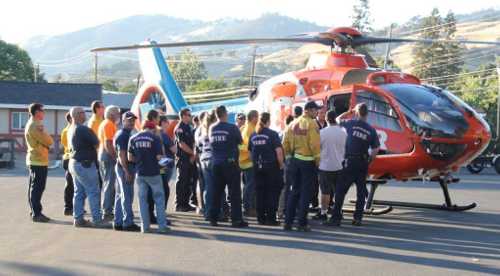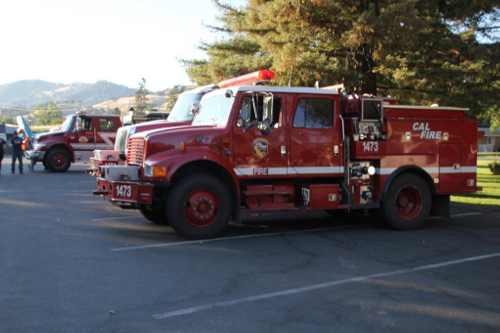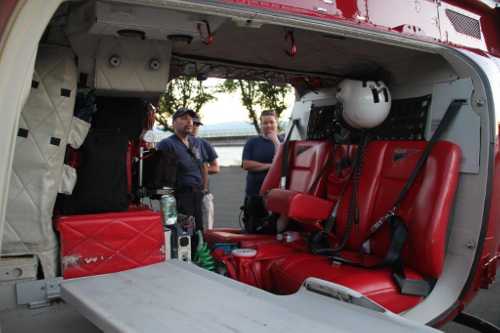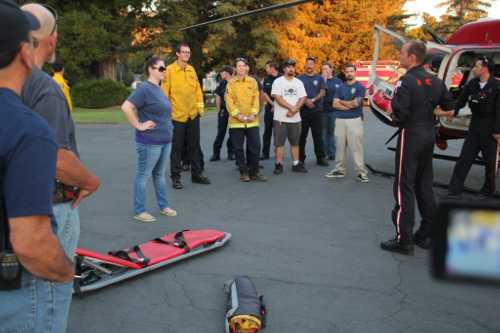U.S. Department of Agriculture Secretary Vilsack and U.S. Interior Secretary Sally Jewell on Friday announced a federal, local and private collaboration that will reduce the risks of wildfire to America’s water supply in western states.
The Western Watershed Enhancement Partnership is part of President Obama’s Climate Action Plan, which outlines a comprehensive approach to reduce carbon pollution and better prepare the United States for the impacts of climate change, including increased risk of wildfires and drought.
Through the Western Watershed Enhancement Partnership, the U.S. Department of Agriculture (USDA) and the U.S. Department of the Interior (Interior) will work together with water users to identify and mitigate risks of wildfire to parts of our nation’s water supply, irrigation and hydroelectric facilities.
Flows of sediment, debris and ash into streams and rivers after wildfires can damage water quality and often require millions of dollars in emergency measures at treatment plants to repair damage to habitat, reservoirs and facilities.
USDA’s Forest Service and Interior’s Bureau of Reclamation will kick off the new partnership through a pilot in the Upper Colorado Headwaters and Big Thompson watershed in Northern Colorado to maintain reliable, clean and sustainable water supplies for the region.
The partnership will also include the Northern Colorado Water Conservancy District and Colorado State Forest Service and builds off of past partnerships between the Forest Service and municipal water suppliers, such as Denver Water’s Forest to Faucets partnership.
“Today’s announcement brings together the West’s largest forest land manager with the West’s largest water provider to ensure the resilience of our forests and their capacity to provide water supply amid climate threats,” said Vilsack. “This partnership will increase forest resilience, improve water quality, and reduce the risk of catastrophic damage from wildfire. This is good news for anyone who pays a water bill, and it is good news for our environment.”
“In the West, more than forty Reclamation dams and facilities are on or downstream from Forest Service lands where drier, hotter weather has exacerbated the risk of wildfire,” said Jewell. “This partnership can serve as a model for the West on collaborative and targeted fire threat reduction and restoration efforts to protect our critical water supplies.”
The Colorado Big-Thompson water system provides water to 850,000 people within eight counties (Boulder, Broomfield, Larimer, Logan, Morgan, Sedgwick, Washington and Weld) and to more than 640,000 acres of agricultural land. It also generates enough electricity to power 58,300 homes annually. The area has experienced several fires in the last few years, including the destructive High Park Fire in June, 2012, that threatened the reservoir.
The Memorandum of Understanding signed today at the Horsetooth Reservoir outside of Ft. Collins, Colo., will facilitate activities such as wildfire risk reduction through forest thinning, prescribed fire and other forest health treatments; minimizing post-wildfire erosion and sedimentation; and restoring areas that are currently recovering from past wildfires through tree planting and other habitat improvements.
USDA and Interior expect to formalize additional partnerships with state and local partners in the following areas:
- Upper Colorado River Headwaters and Big Thompson Watershed in northern Colorado;
- Salt River-CC Cragin project in Arizona;
- Boise River Reservoir Partnership in Idaho;
- California Partnership in the Mid-Pacific Reclamation Region;
- Yakima Basin in Washington State; and
- Horsethief Reservoir/Flathead River in Montana.
Nationwide, the National Forest System provides drinking water to more than 60 million Americans. The share of water supply originating on national forest lands is particularly high across much of the West, including the Upper Colorado Basin where nearly half of all water comes from National Forests. Healthy forests filter rain and snowmelt, regulate runoff and slow soil erosion – delivering clean water at a far lower cost than it would take to build infrastructure to replace these services.
The goal of the Western Watershed Enhancement Partnership is to restore forest and watershed health and to proactively plan for post-wildfire response actions intended to protect municipal and agricultural water supplies, infrastructures and facilities, water delivery capabilities and hydro-electric power generation.
Forest and watershed restoration activities and proactive planning can help minimize sedimentation impacts on reservoirs and other water and hydro-electric infrastructure by reducing soil erosion and the impacts of wildfires, helping water managers avoid costs for dredging, water filtration, and the need to replace damaged infrastructure.
Although comprehensive data on wildfire costs for water users is unavailable, several wildfires in recent decades illustrate the diversity and magnitude of direct costs:
- The 1997 Buffalo Creek and 2002 Hayman Fires forced Denver Water to spend more than $26 million on dredging Strontia Springs Reservoir, treating water and reseeding the forests in the watershed;
- The 2000 Cerro Grande Fire cost the Los Alamos Water Utility more than $9 million and generated about $72.4 million in emergency rehabilitation, restoration and flood mitigation cost;
- The 2009 station fire and ensuing storms in 2010 cost the Los Angeles County Department of Public Works $30 million in the aftermath to remove sediment from debris basins. LA County Public Works plans to spend an additional $190 million dredging four reservoirs that are no longer able to reliably meet the county’s needs for flood control and water storage capacity; and
- The 2011 Las Conchas Fire prompted the cities of Santa Fe and Albuquerque to shut down their water supply intake systems in affected rivers and reservoirs due to ash accumulation.














